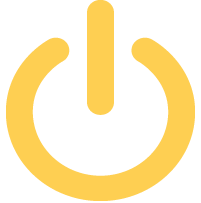Action Overview: Learning Progressions
Action: Staff identify learning progressions across grades as represented by standards and benchmarks.
This set of resources is designed to help educators develop shared understanding of the learning progressions within a set of standards.
Introduction
Learning progressions, also referred to as learning trajectories, describe an increasing sophistication of knowledge and skills over time. Though learning progressions could be viewed as confined within a grade or even a unit of study, in the Standards Portal, they are discussed as progressions across grades. This thinking is a shift from a focus on individual modules or learning units to intentionally sequenced experiences designed to support student learning and to address core disciplinary ideas and practices that lead to career and college readiness (Duschl, Maeng, & Sezen, 2011, p. 124).
For example, after a third grade team investigated how a particular idea develops from first grade through fifth grade, they realized that they had been addressing benchmarks from higher grade levels. As a result, the team focused on the grade level expectations, revised their lesson plans to target the third grade standards and benchmarks, and therefore made more efficient use of instructional time.
What are the benefits of understanding progressions of learning?
Understanding learning progressions provides many implications for changing and aligning curriculum, instruction, and assessment practices.
· Educators may identify steps in learning not explicitly articulated in the standards and benchmarks.
· Educators can both explore:
o The way aspects of a big idea are presented and integrated over time.
o The building blocks of knowledge and performance over time.
· Educators can plan for pretesting or preassessment to:
o Avoid false assumptions of learner readiness.
o Identify learners ready for greater rigor.
o Consider learner preconceptions.
o Address or avoid inequities resulting from varied learners’ prior knowledge and opportunities.
· Educators consider and plan for scaffolds available to assist students in their development.
· Educators consider criteria for creating or adjusting the educational opportunities presented through the curriculum to ensure appropriate levels of rigor and performance.
Suggested Activities
To help staff understand learning progressions, activities to analyze learning progressions within the standards and benchmarks are provided, along with a template to document the development of educators’ understanding of the progressions and implications for ongoing work. Activities are designed to be carried out by teams of educators and are intended to be used over time in an ongoing, repeating fashion. Other ways to document shared understanding include use of a learning management system, shared online documents (for example, Google Docs), and shared digital files.
How do educators use Portal resources to identify learning progressions across grades as represented by standards and benchmarks?
Complete one or both of the activities in the Understanding Progressions across Grades activity directions.
Option 1: Benchmark Sorting Activity
Option 2: Benchmark Highlighting or Note-taking Activity
Related Content
For more information about the role and purpose of standards, visit Develop a shared understanding of a standards-based education system.
To learn about teaching and learning shifts in standards resulting from these influences of national and state contexts, explore the Staff develop a shared understanding of the shifts required to help all students meet the standards action of Develop shared understanding of academic standards.
For information about how students learn, explore the Staff develop shared beliefs about student learning and how those beliefs affect curriculum and instructional choices action of Revise and Design Units and Lessons.
Sources
Duschl, R., Maeng, S., & Sezen, A. (2011). Learning progressions and teaching sequences: A review and analysis. Studies in Science Education (47)2, 123-182.
Back to Academic Standards.






